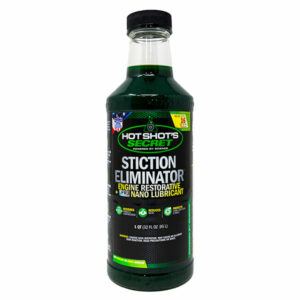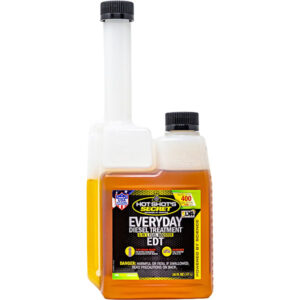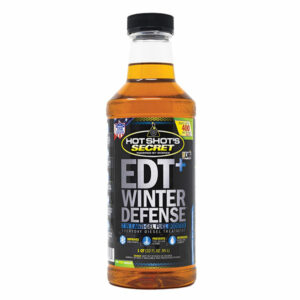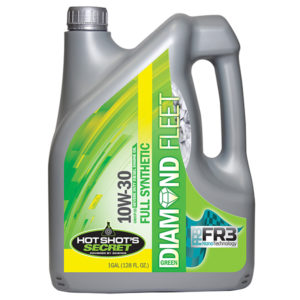
The debate rages on whether 5W-20 or 5W-30 is the better oil choice. Some swear by one, and others argue just as passionately for the alternative. To make matters more complex, some manufacturers recommend an acceptable range of oils rather than one specific type.
Understanding the distinctions — and consulting your owners manual — can help you choose the right option for your vehicle.
Key Differences Between 5W-20 and 5W-30
There are numerous differences between 5W-20 and 5W-30 oils. Each has unique applications, weights, performance, viscosity, fuel efficiency levels and temperature ranges.
Weight
The “W” in 5W-20 and 5W-30 refers to “winter,” not weight. Many people use the term weight as a synonym for viscosity — an oil’s thickness. In those terms, 5W-20 is thinner and lighter-weight than 5W-30.
It’s worth noting that 5W-20 and 5W-30 are technically multiweight oils. Their viscosity changes with operating temperatures and becomes higher weight as the engine warms.
Viscosity
In scientific terms, viscosity is a substance’s resistance to flow. Thicker fluids with higher viscosity move more slowly. Imagine honey versus pancake syrup to visualize high vs. low viscosity.
Since 5W-30 is thicker than 5W-20, it has a higher viscosity. In engines, that can mean greater protection because the lubrication layer is thicker, making it more effective for preventing metal-on-metal contact. However, high-viscosity oil can also mean increased wear and tear on moving components since it takes longer to reach them. The 5W-20 boasts a thinner consistency with faster flow rates, translating to reduced wear and tear for moving pieces and a thinner protective layer.
Performance
Another crucial factor differentiating 5W-30 and 5W-20 oils is their performance.
Because a 5W-20 is more susceptible to breaking at high running temperatures, the 5W-30 option often delivers better performance in certain applications. Many vehicle owners in warmer climates prefer 5W-30 since it retains its viscosity in hotter temperatures.
Conversely, those who prefer lower buildup and faster flow will opt for the 5W-20.
Efficiency
Many vehicle owners today seek higher fuel efficiencies, and the engine oil you choose can impact fuel economy. Using oil with the correct viscosity for your engine helps prevent fluid friction that can increase fuel consumption and emissions.
Typically, a 5W-20 oil provides higher gas mileage than a 5W-30 due to its more effortless flow. However, the 5W-30 oil is still a suitable option where fuel efficiency is concerned. Using 5W-30 simply produces a bit less economy because moving an oil that is less freely flowing through the system consumes more energy. This versatile oil is often an ideal solution for engines with high miles where its protective qualities help outweigh its slightly reduced fuel efficiency.
Modern oil manufacturers continue to strive for a balance between efficiency and viscosity to improve engine protection and performance.
Temperature
One argument that 5W-30 fans make is that 5W-20 will break down more quickly at higher temperatures. However, users should also consider how cold conditions affect their engines.
In this instance, both have the same viscosity during cold starts. It’s important to stress that what is cold to your engine may not fit your definition. To your vehicle, a cold start is anytime the engine cranks at temperatures beneath normal operating levels, regardless of the weather outside.
Cold starts are also the time your engine undergoes the most wear and tear. Thinner 5W-20 flows faster in normal operating temperatures, protecting engine components by lubricating them sooner.
What Is 5W-20 Oil Used for?
You’ll often find 5W-20 oil in small-engine, gasoline-powered vehicles used for light duty. That’s because manufacturers consistently design lighter-weight engines with compact footprints. Since the tolerances are tighter, a thinner oil achieves faster flow. As an added bonus, using 5W-20 may help lower emissions and produce better gas mileage.
What Is 5W-30 Oil Used for?
Many equipment manufacturers have made 5W-30 oil a popular recommendation because of its versatility. Using 5W-30 is common for higher-performing and larger engines — such as turbo-charged models — because its thicker consistency helps provide some protection from wear and tear. Since this oil is more viscous, it withstands higher operating temperatures better than thinner oils.
Can You Use 5W-30 Instead of 5W-20?
While some people consider these oils interchangeable, Hot Shot’s Secret recommends choosing your oil based on their differences. Manufacturers precisely formulate the oils for certain engine types.
Plus, the extra viscosity can lead to clogging or an inadequate supply, prompting your check-engine light to come on. Adding the correct oil type helps ensure better performance and less engine wear and tear.
In an emergency, you may have to substitute one for the other, but it’s always best to follow your manufacturer’s recommendations.
What About Other Oil Viscosities?
The debate surrounding whether 5W-30 or 5W-20 is better may leave you wondering about other viscosities. Can you use a 10W-30 instead of a 5W-20? What about a 5W-30 versus a 10W-30?
A 10W-30 will be more viscous during cold cranking than a 5W-20. That can mean a harder time getting moving during winter months in colder climates. In turn, a slow flow can expose your engine to more potential damage.
The same is true for a 5W-30 versus a 10W-30. The oils have an identical viscosity at operating temperature when the oil is warm, but the 5W-30 will flow faster at a cold start.
What Do These Numbers Mean?
All oil classifications fall under the Society of Automotive Engineers (SAE) guidelines. The SAE relies on viscosity as the primary ranking factor, which typically ranges between zero at the thinnest and 40 at its thickest. Higher numbers indicate more thickness.
The first number on the label represents the viscosity at lower temperatures, while the second refers to consistency at higher ones. A 5W-20 oil and a 5W-30 oil have the same thickness during cold-engine starts — the oil with the higher second number retains more viscosity when the engine is hot.
Thinner Oil Is Becoming More Popular
Thinner oil is gaining traction thanks to several advantages, including:
- It’s designed for modern small engines: Newer cars have advanced features like variable valve timing and tighter tolerances in smaller engines. Thinner oils lubricate critical parts faster.
- It’s improving fuel economy: Thin oil consumes less energy to pump, which is why many manufacturers recommend it to help boost fuel economy. The more you drive and the larger your fleet, the greater the savings can be.
- It’s also money-saving: Thinner oils are usually more affordable than their thicker counterparts. Plus, increased protection in cold temperatures helps safeguard against costly engine damage.
Choose Hot Shot’s Secret Oils for Performance and Value
All Hot Shot’s Secret engine oils feature FR3 Nano-Technology, our patented solution for increasing lubrication and film strength. We’ve created these based on decades of scientific research and back them with a money-back guarantee if they don’t meet or exceed your performance expectations. Our oils can result in significant savings by extending your engine’s life span.
Shop our entire lineup of engine oils online or call 800-341-6516 for personalized advice from an expert.




